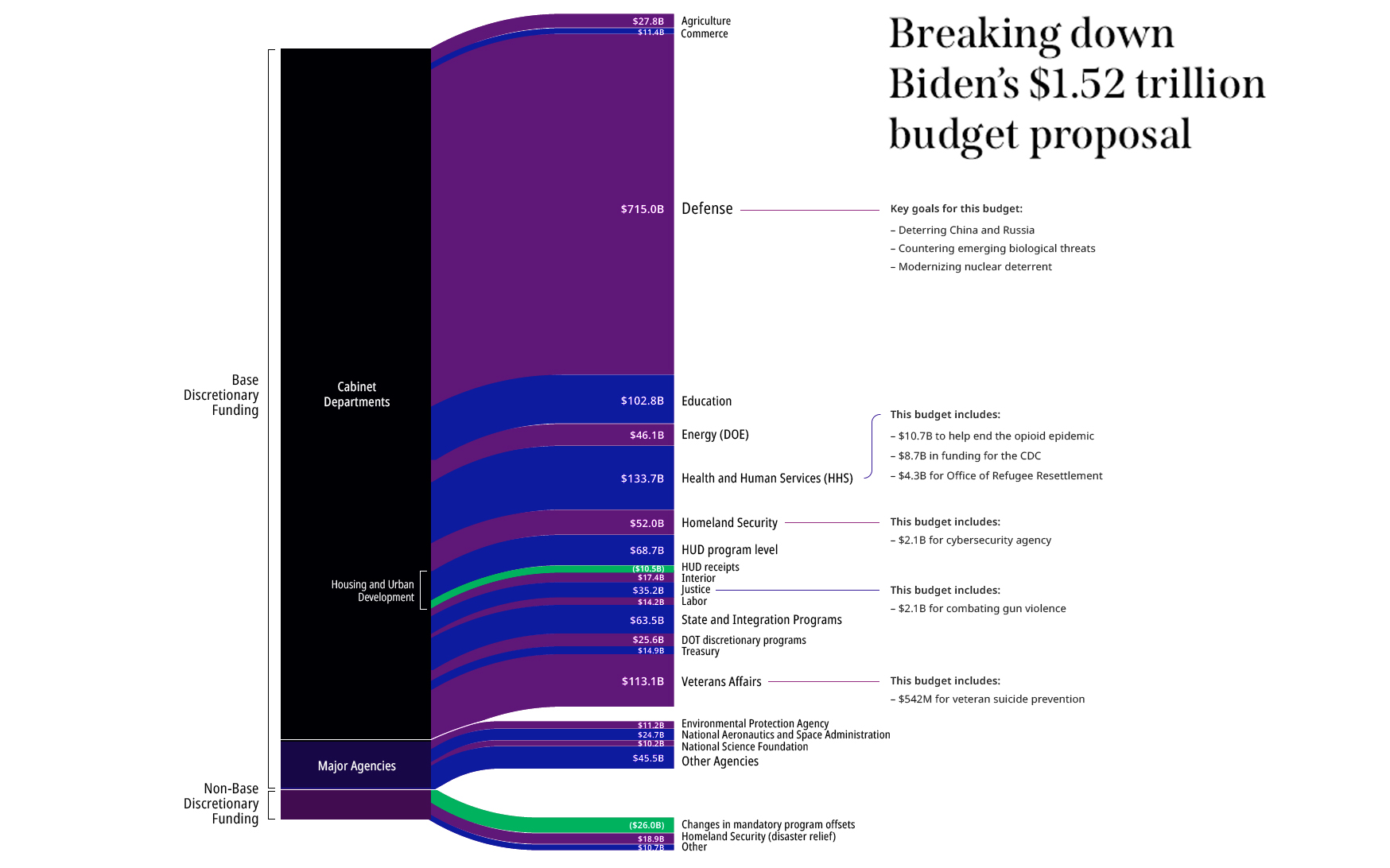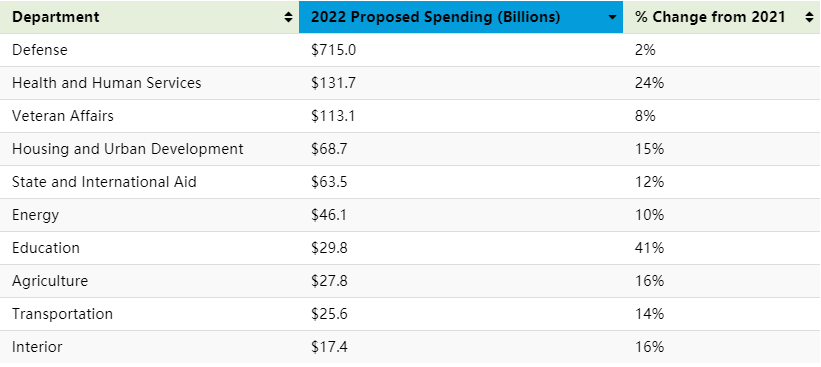
Biden unveils first $1.5 trillion annual budget proposal for fiscal year 2022
What’s federal budget?
Before diving into the proposal’s key takeaways, it’s worth taking a step back to cover the basics around the U.S. federal budget process.
Each year, the president of the U.S. is required to present a federal budget proposal to Congress. It’s usually submitted each February, but this year’s proposal has been delayed due to alleged issues with the previous administration during the handover of office.

President Biden on April 9th asked Congress to authorize a massive $1.5 trillion federal spending plan later this year, seeking to invest heavily in a number of government agencies to boost education, expand affordable housing, bolster public health and confront climate change.
The request marks Biden’s first discretionary spending proposal, a precursor to the full annual budget he aims to release later in the spring that will address programs including Social Security, Medicare and Medicaid. The president’s early blueprint calls for a nearly 16 percent increase in funding across nondefense domestic agencies, reflecting the White House’s guiding belief that a bigger, better-resourced government in Washington can help address the country’s most pressing political and economic challenges.
Many of the programs Biden seeks to fund at higher levels starting in October are initiatives that President Donald Trump had unsuccessfully tried to slash while in the White House. In a further break with Trump, who labored to spend sizable sums on defense during his term, Biden’s new plan calls for a less than 2 percent increase for the military in the upcoming fiscal year.

What’s in Biden’s budget proposal?
Under Biden’s proposal, the Education Department would see a roughly 41 percent increase over its current allocation, reaching $102 billion next fiscal year, with most of the new funds targeted for the Title I program, which funds high-poverty schools. The proposal would double federal spending on Title I — the largest increase since the program was created more than 55 years ago.
The plan also proposes a roughly 23 percent boost to the Department of Health and Human Services, including more than $8.7 billion for the Centers for Disease Control and Prevention, which the administration says is the highest funding level for the public health agency in two decades. It would further create a new federal agency under the National Institutes of Health, called the Advanced Research Projects Agency for Health, focused initially on innovative research on cancer, diabetes and Alzheimer’s disease. Biden long has had an intense interest in cancer, and translating basic scientific discoveries into cures for patients, particularly after the death of his son, Beau, from a glioblastoma in 2015.
The budget envisions putting nearly $69 billion in federal money toward addressing public housing, a 15 percent increase from the amounts enacted in 2021, to help low-income families obtain affordable accommodations. And the Biden administration hopes to set aside a total of $14 billion in new sums across the government to protect the environment, including efforts to reduce carbon emissions and research clean-energy technology.
Here’s a look at some of the biggest departmental changes, and their proposed spending for 2022:


“Together, America has a chance not simply to go back to the way things were before the COVID-19 pandemic and economic downturn struck, but to begin building a better, stronger, more secure, more inclusive America,” the White House’s acting budget chief, Shalanda Young, said in a letter accompanying the blueprint Friday.
Via @TheWashingtonPost @VisualCapitalist



